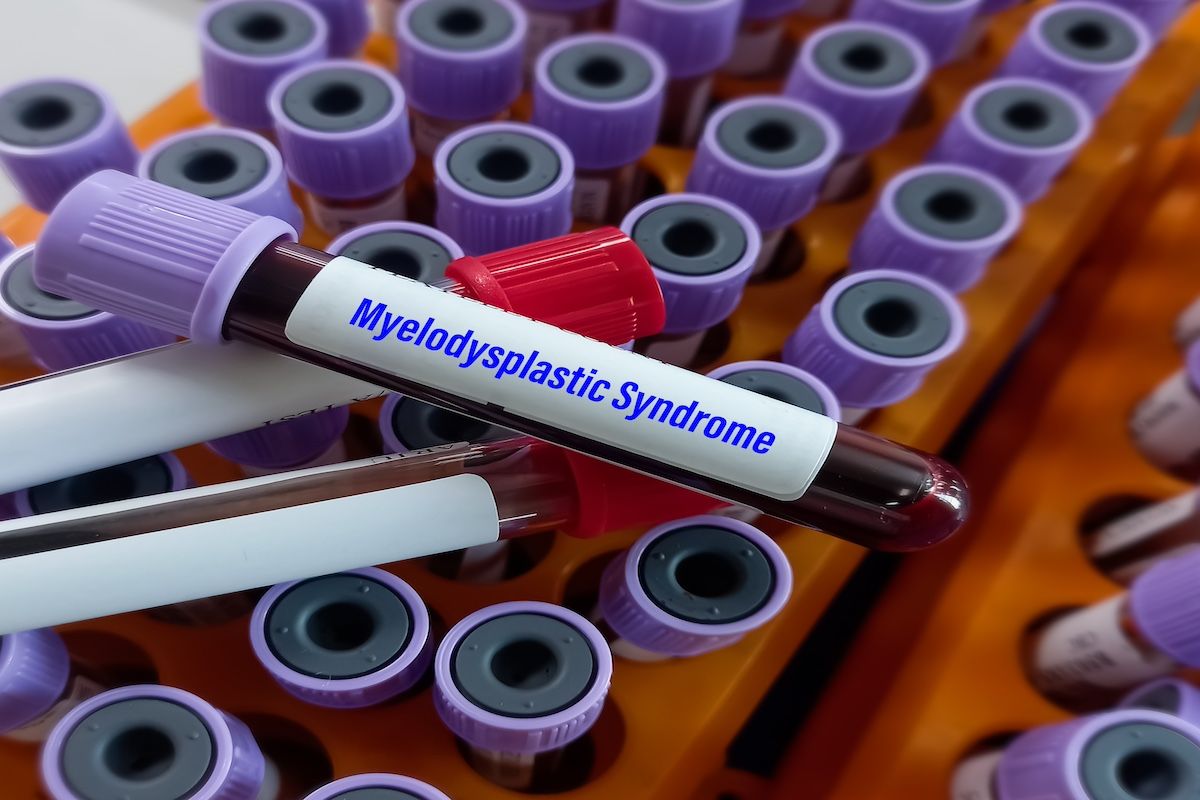Article
Researchers Develop Improved Flow Cytometric Score for MDS Diagnosis
Author(s):
A flow cytometric score developed in 2012, which uses 4 parameters to distinguish low-grade myelodysplastic syndromes (MDS) from nonclonal cytopenias, is simple and practical for screening patients with MDS, according to research published in the American Journal of Translational Research.
A flow cytometric score (FCM-score) developed in 2012, which uses 4 parameters to distinguish low-grade myelodysplastic syndromes (MDS) from nonclonal cytopenias, is simple and practical for screening MDS patients, according to research published in the American Journal of Translational Research.
To improve upon this method, researchers investigated a gating strategy and cluster of differentiation (CD) markers in FCM for MDS diagnosis. Compared with the original score, the new version (MFCM-Score) exhibited better accuracy, objectiveness, and clinical application.
MDS, classified by the World Health Organization (WHO) as myeloid neoplasms, are a group of heterogeneous diseases characterized by ineffective hematopoiesis, peripheral blood cytopenias, and dysplasia in 1 or more myeloid lineage cells in bone marrow, authors explained.
Although the WHO classifies MDS based on peripheral cytopenias and bone marrow dysplasia evaluations, in clinical practice, patients may be negative for these diagnostic markers yet still have MDS, warranting additional diagnostic measures for these patients.
As research has shown that flow cytometry is capable of diagnosing reactive and clonal proliferations of bone marrow hematopoietic cells, the method has been explored as a potential diagnostic tool for MDS. However, because flow cytometry is expensive and requires a large number of antibodies, it is untenable in developing countries. To overcome these issues, the FCM-score was developed in 2012.
In the current study researchers recruited participants from a single hospital in China. Based on their medical history, clinical characteristics, morphological changes, and response to treatment, patients were divided into cohorts with MDS (n = 54) and nonclonal cytopenias (non-MDS) (n = 40).
Clinical and demographic data, in addition to bone marrow samples, were collected. Under the original method for FCM-scoring, combinations of antibodies CD34, CD19, CD33, and CD45 are analyzed for the following parameters: myeloblast-related cluster size (myeloblast-related cells/all nucleated cells), B-progenitor-related cluster size (B-progenitor-related cells/all CD34+ cells), CD45 mean fluorescence intensity (MFI) ratio (lymphocytes/myeloid blast cells), and SSC peak channel ratio (granulocyte/lymphocyte). Originally, a value of 1 is assigned to each parameter and MDS was diagnosed if a FCM-score was 2 or greater, authors explained.
The original FCM scoring also used low side scatter (SSC) and CD45 expression to separate B lymphocyte progenitor cells and myeloblasts. In contrast, researchers’ gating and CD strategy “used CD19 and CD33 to separate B lymphocyte progenitor cells and myeloblasts within the CD34+CD45dimm population.”
Using patients’ data, investigators compared the 2 scores (at the cutoff of 2) and analyzed the relationship between the MFCM-score and the Revised International Prognostic Scoring System (IPSS-R) for MDS.
Analyses revealed:
- Using the FCM-score, 49 of 54 MDS cases were diagnosed (sensitivity 90.7%); 7 false-positives (misdiagnosed) were found in non-MDS patients (specificity 82.5%); the agreement between clinical and FCM-score diagnosis was 87.2%; the positive predictive value (PPV) and negative predictive value (NPV) were 87.5% and 86.8%, respectively.
- Using the MFCM-score, 52 of 54 MDS cases were correctly diagnosed (sensitivity 96.3%); there were 5 false-positives in the non-MDS cohort (specificity 87.5%); the agreement between clinical and FCM-score diagnosis was 92.6%; the PPV and NPV were 91.2% and 94.6%, respectively.
- Chi-square tests showed that the diagnostic rates by MFCM-score and FCM-score were similar (P > 0.05).
- MFCM-score had a positive correlation with the IPSS-R prognosis classification for MDS (Spearman r = 0.848; P < .001).
- All parameters in the MFCM-score were positively correlated to the IPSS-R grades in MDS (P < .01).
The relatively small sample size and short period of follow-up mark limitations to the study, and the MFCM-score should be validated in large, multicenter prospective studies, the authors wrote.
“We can follow up the treatment and survival of MDS patients to validate the clinical significance of the MFCM-score in the treatment and prognosis of patients,” the researchers concluded. “The MFCM-score covers not only the low-grade MDS, but also all MDS subtypes, and it also has prognostic value for survival and can be used for treatment tracking.”
Reference
Guo J, Wang H, Xiong S, et al. Simplified flow cytometry scoring for diagnosis and prognosis of myelodysplastic symptom. Am J Transl Res. 2020;12(11):7449-7458.





